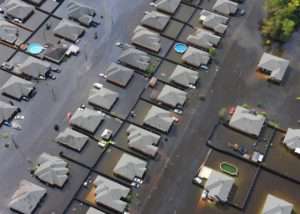 Hurricane season's in full swing for those of us living in prone areas. It's crucial that we have our houses in order. Where should you start if you haven't already? If you don't have the basics, start there! Since there's no such thing as an all-inclusive list that fits everyone, here's a general basics list (courtesy of the United States Coast Guard):
Hurricane season's in full swing for those of us living in prone areas. It's crucial that we have our houses in order. Where should you start if you haven't already? If you don't have the basics, start there! Since there's no such thing as an all-inclusive list that fits everyone, here's a general basics list (courtesy of the United States Coast Guard):
Survival Kit Supplies
A 72-hour Disaster Survival Kit per person in your household (do not forget pets where applicable!)
Drinking Water
• One gallon per person/per day in unbreakable containers
• Two quarts minimum per person/per day for food preparation and sanitation
• Berkey Water Purifier (water filtration system of some sort)
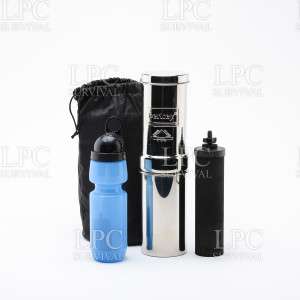 Water for sanitation use
Water for sanitation use
• Store extra containers of water to be used for flushing toilets, cleaning, and bathing.
• Water purification tablets (Halazone)
• Fill the bathtub & other containers with water for flushing toilets, cleaning, bathing
Non-perishable Food
• At least 3-7 days of food for each member of the family
• Small, single serving cans (not requiring cooking or refrigeration). Dried fruit, peanut butter and jelly, coffee, tea, soft drinks and pet foods
• Ready-to-eat canned meats, fruits and vegetables
• Canned juices, milk, soup (if powdered, store extra water)
• Staples – sugar, salt, pepper in water proof containers
• High energy foods like crackers, granola bars, trail mix
• Raw vegetables that do not need refrigeration
• Fresh bread
• Comfort/stress foods: cookies, hard candy, sweetened cereals, lollipops, instant coffee, tea bags
• Food for infants
• Lots of ice (you can freeze your water supply)
• Pedialyte (to restore hydration if needed)
• Vitamins
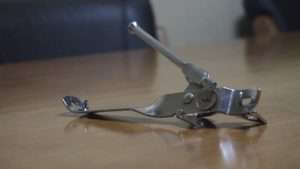 Food-related Supplies
Food-related Supplies
• Sterno for cooking
• Paper cups, plates, and plastic utensils
• Non-electric can opener
• Aluminum foil
• Plastic storage containers
Baby Needs
• Special foods (enough for several days)
• Formula (enough for several days)
• Extra diapers
• Medicines (get a copy of prescription)
• Blankets
• Diaper Rash Ointment
• Baby Wipes
• Powder
• Bottles
• Pacifier
• Favorite toy/blanket
• Medicine dropper
• Diaper-rash ointment
Sanitation
• Toilet paper, towelettes, soap, baby wipes, liquid hand sanitizer
• Liquid detergent
• Feminine supplies
• Personal hygiene items (toothpaste, deodorant, shampoo etc.)
• Plastic garbage bags, ties (for personal sanitation uses)
• Plastic bucket with tight lid
• Household chlorine bleach, disinfectant
• Plenty of absorbent towels
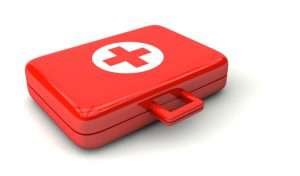 First Aid Kit
First Aid Kit
• Assemble a first aid kit for your home and one for each car.
• Adhesive bandages various sizes, sterile gauze pads (various sizes)
• Germicidal hand wipes or waterless alcohol-based hand sanitizer
• Non-latex gloves, adhesive tape, anti-bacterial ointment, antiseptic spray
• Cold packs (non-refrigerated type), scissors, tweezers, rubbing alcohol
• CPR breathing barrier, (face shield), thermometer, safety pins
Non-Prescription Drugs
• Aspirin or nonaspirin pain reliever, Benadryl, peroxide
• Anti-diarrhea medication, Antacid (for stomach upset)
• Syrup of Ipecac (use to induce vomiting if advised by the Poison Control Center)
• Laxative
• Activated charcoal (use if advised by the Poison Control Center)
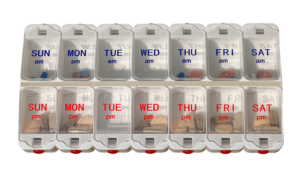 Prescription Drugs
Prescription Drugs
• Heart and high blood pressure medication
• Insulin (minimum 30 day supply)
• Hearing Aid and extra batteries
• Prescription drugs
• Denture needs
• Contact lenses and supplies
• Extra eye glasses
• Tip: If your insurance will allow, get a 90 day supply of prescriptions and have at least a 30 day supply on hand. Don’t wait until a couple of days before a storm to go to the pharmacy for refills you may not get your prescription refilled; the lines are long and they run out of supplies very quickly.
Clothing and Bedding
• At least one complete change of clothing and footwear per person
• Sturdy shoes or work boots
• Towels
• Rain gear
• Blankets or sleeping bags
• Pillows
• Hat and gloves
• Sunglasses
• Tent
• Lawn chairs
Entertainment
• Games
• Books
• Cards
• Extra batteries for games
• Coloring books, crayons.
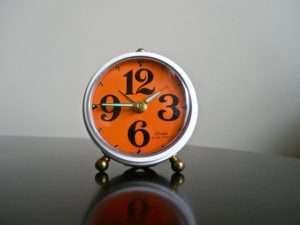 Miscellaneous
Miscellaneous
• Wind-up or battery-operated clock
• Paper, pencil
• Needles, thread
• Camping utensils
• Map of the area (for locating shelters) and returning to the area.
• Cash or traveler's checks
• Emergency preparedness manual
• Citronella candles
• Tip: Have enough cash to sustain you through a 2 week period. Without electricity, most businesses (if open) will not accept credit cards and may not accept traveler’s checks.
We recommend that you follow evacuation orders if issued. If you choose not to evacuate and stay home, consider the following:
• Have enough food, water, medications, and other supplies to last at least 2 weeks.
• Turn refrigerator to coldest setting and keep closed.
• Turn off propane tanks.
• Unplug small appliances.
• Fill bathtub and other containers with water for cleaning and flushing. Additional water is stored for drinking.
• Cover all windows and other openings with hardened protections. If you do not have
manufactured shutters, cut plywood and secure to protect the windows.
• Close all interior doors and brace outer doors.
• Select an interior room to use as a safe room.
• Plan as though you were evacuating and have enough cash on hand to sustain purchasing
of gas, food, and other supplies in the days following the storm.
• If you have a generator, have enough gas on hand to sustain usage for several days.
• Have sufficient medications in case you are confined to your home for several days. Post-storm there may not be any electricity and pharmacies will probably closed even with a minor storm.
• Plan to cook on a camp stove or grill in the days immediately after the storm passes.






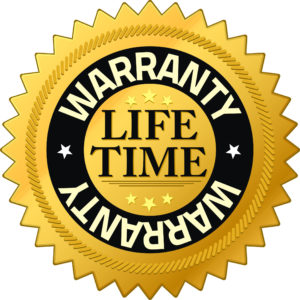
No comments yet.